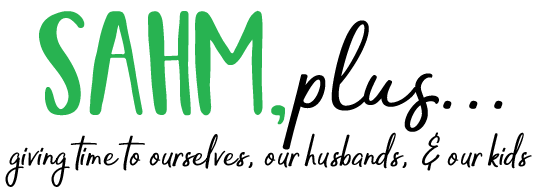If you want to establish healthy sleep habits and help your family get the rest they need, you need to understand baby sleep cues and patterns. Here’s what you need to know to set your baby up for a successful night of sleep.
As a new parent or caregiver of an infant, one of the most challenging aspects of caring for your baby is getting them to sleep. Understanding your baby’s sleep cues and patterns is essential for both their health and development. In this article, we’ll discuss sleep cues, sleep patterns, and factors that can affect your baby’s sleep. We’ll also provide you with tips on how to establish a consistent sleep routine and help your baby develop healthy sleep patterns.

Sleep Cues: What to Look For
Babies can’t communicate like adults do, so it’s essential to learn to recognize their sleep cues. Sleep cues are signals that babies give when they’re tired and ready for sleep. Recognizing these cues is crucial to prevent overtiredness and to help your baby fall asleep more easily.
Common sleep cues that babies may exhibit include:
- yawning
- rubbing their eyes
- becoming fussy
- slowing down their movements
- losing interest in toys or people
- staring blankly
- pulling at ears
- redness around the eyebrows or eyes
- sucking fingers
- inconsolable crying
As a parent, it’s essential to be mindful of these cues and adjust your baby’s sleep routine accordingly.
One way to pick up on your baby’s sleep cues is to keep a log of their behaviors and patterns throughout the day. You can note when your baby eats, sleeps, and plays. Over time, you’ll be able to see patterns and recognize when your baby is getting sleepy.
Another way to help your baby sleep is to create a consistent sleep environment. By doing this, your baby will associate specific cues with sleep time. For example, you can establish a bedtime routine that includes a warm bath, a story, and a lullaby. By doing this consistently, your baby will learn that these cues mean it’s time for sleep.
Sleep Patterns: What to Expect
Sleep patterns refer to the different stages of sleep that babies go through. Babies spend a lot of their time sleeping, and understanding their sleep patterns can help you establish a consistent sleep routine.
Newborns sleep a lot, typically 16-17 hours a day, but they don’t stay asleep for long periods. They may wake up every 2-3 hours to eat, and their sleep may last only a few hours at a time. As they grow, babies will sleep for longer stretches and wake up less frequently during the night.
Here’s what you can expect in terms of sleep patterns based on your baby’s age:
0-3 months: Babies in this age range typically sleep in short bursts throughout the day and night, waking up every 2-3 hours to feed. They may also have periods of alertness and playfulness.
3-6 months: Babies in this age range may start to sleep for longer stretches at night, typically around 6-8 hours. They may still wake up to feed, but may also be able to sleep for longer periods between feedings. They may also start to establish more regular nap times during the day.
6-9 months: Babies in this age range may start to sleep for even longer stretches at night, around 10-12 hours. They may also start to transition to 2-3 naps per day, rather than sleeping in short bursts throughout the day.
9-12 months: Babies in this age range typically need around 11-12 hours of sleep per day, with most of it at night. They may also transition to one or two naps per day, depending on their individual needs.
Babies go through different stages of sleep, including REM (Rapid Eye Movement) and non-REM sleep. REM sleep is the stage where babies dream and move their eyes rapidly. Non-REM sleep is a deeper stage of sleep where the body repairs and regenerates itself. Unlike adults, infant sleep cycles are more equally distributed between REM and non-REM sleep.
One way to help your baby develop healthy sleep patterns is to establish a consistent sleep routine. This can include creating a relaxing sleep environment, keeping the room dark and quiet, and avoiding stimulating activities before bedtime. By doing this consistently, your baby will learn to associate these cues with sleep time and develop healthy sleep habits.
Factors Affecting Sleep
There are a number of factors that can affect a baby’s sleep, including illness, teething, and developmental milestones. It’s important to be aware of these factors and adjust your baby’s sleep routine as needed to accommodate them.
Teething: Teething can be a painful and uncomfortable process for babies, and it can disrupt their sleep. If your baby is teething, try to offer soothing remedies like teething toys or a gentle massage.
Growth spurts: Babies go through growth spurts frequently during their first year, and during these periods, they may need to eat more frequently, which can disrupt their sleep patterns. If you notice that your baby is eating more often than usual, try to adjust their feeding schedule to accommodate their increased appetite.
Developmental milestones: As babies grow and develop, they may experience new milestones, like rolling over or crawling, that can affect their sleep. They may be more active during the day and have a harder time settling down at night. Try to anticipate these changes and adjust your baby’s sleep routine accordingly.
Illness: If your baby is sick, their sleep may be disrupted. They may have a harder time breathing or may need to cough more frequently, which can make it harder for them to sleep. Try to offer comfort and support and consult your pediatrician if you’re concerned.
If your baby is experiencing any of these sleep disturbances, don’t panic! Remember that all babies are different, and what works for one may not work for another. It’s also important to keep in mind that sleep patterns can change frequently in the first few months of life. If you’re feeling overwhelmed, consider speaking with a pediatrician or a sleep specialist for additional guidance and support.
Finally, it’s important for parents to remember that sleep regression is a normal part of a baby’s development. This is a period when a baby may have more trouble sleeping or wake up more frequently during the night. It typically occurs around 4 months and again around 8-10 months of age. While it can be frustrating for parents, it’s important to remain patient and consistent with your baby’s sleep routine during this time.
Establishing Healthy Sleep Habits
Establishing healthy sleep habits is essential for your baby’s health and wellbeing, but it can take time and patience. Here are some tips to help you establish healthy sleep habits:
Establish a consistent sleep routine: Create a consistent sleep routine that you follow every day. This can include a bath, a story, and a lullaby, for example. Over time, your baby will learn to associate these activities with sleep and will be more likely to settle down.
Create a sleep-friendly environment: Make sure your baby’s sleeping environment is conducive to sleep. This means making sure the room is dark, quiet, and cool. Use a white noise machine or a fan to block out any background noise.
Encourage self-soothing: As your baby gets older, encourage them to self-soothe by giving them a lovey or a pacifier. This can help them learn to fall asleep on their own and can prevent them from becoming dependent on you to help them fall asleep.
Be consistent: Consistency is key when it comes to establishing healthy sleep habits. Try to stick to your baby’s sleep routine as much as possible, even on weekends or when you’re traveling.
Coping with Sleep Challenges
Despite your best efforts, there may be times when your baby has trouble sleeping. Here are some common sleep challenges and how to cope with them:
Night waking: If your baby wakes up frequently during the night, try to offer comfort and support, but avoid feeding (when age- or developmentally-appropriate) or engaging in stimulating activities. Over time, your baby will learn to settle down on their own.
Nightmares: Nightmares are common in babies and young children. If your baby has a nightmare, offer comfort and reassurance. Try to establish a comforting bedtime routine that can help prevent nightmares.
Separation anxiety: Separation anxiety is common between 6 months and 3 years of age. If your baby is experiencing separation anxiety, try to offer comfort and reassurance. You can also try gradually increasing the amount of time you spend away from your baby to help them adjust.
Understanding your baby’s sleep cues and patterns is crucial for their overall health and development. By paying attention to your baby’s individual needs and adjusting their sleep routine accordingly, you can help them establish healthy sleep patterns that will benefit them for years to come. Remember to be patient and flexible, and don’t hesitate to seek guidance from a pediatrician or sleep specialist if needed.
FAQs About Baby Sleep Cues & Patterns
What is the 3 yawn rule?
One of the best ways to know your baby is ready for bed (whether it’s nighttime or nap time) is to look for yawning. If you notice more than 3 yawns, your baby may be overtired and will be more difficult to settle for sleep. Try to put your baby down earlier than 3 yawns.
What are the happiest baby sleepy cues?
These are external cues parents can utilize to create calming moments in preparation for baby’s bedtime, including swaddling, shushing and sucking. Check out The Happiest Baby’s 5 S’s for Soothing Babies.
Should I follow sleep cues or wake windows?
From my experience, following baby’s sleep cues is instrumental in determining your baby’s natural bedtime and helping them to sleep through the night. The trick is to be in-tune with your baby so you know the difference between sleep cues compared to signs your baby is hungry.
